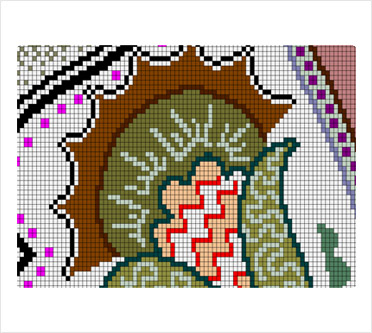Physical or old-fashioned fabric making techniques some times adjust in both way, by style beauty and styles, within the field of printed textile design with the latest digital cloth making engineering it improved the model and indicating of printed textile design. It’s a well known fact that the newest newest ways of electronic printing on fabrics have subjected new capabilities to the cad design and manufacturers. Electronic making strategies have facilitated manufactures to create a electronic choosing and have advantages of change in designs before engraving. By adopting electronic making techniques you are able to re-adjust old-fashioned printing style and can ready to offer new looks in design.
Nowadays, many clients are challenging textiles to be printed with various color combinations, variations, models, old-fashioned types and appears, but to co-up with your customization demands there is a huge issue to go to the whole bulk market with standard printing technology. Electronic printing gains over main-stream printing it provide remarkable advantages like fast turn-around, efficient set-up and pace, economical and great freedom, requires less time, change probable etc. And in today’s customer oriented industry the making technology is not limited to carrying wears; nonetheless it bounds to their limits and reaches to the requirements of industry display graphics, image of enormous cloth cards of tv and celebrities, marketing applications, banners and banners and many mores.
From digital textile printing technology you’ll have latest progressive and innovative deigns like concepts of shadow, shimmering, shake, reflection, moire, visual, transparent, netting, blurring, adding, superimposing, etc., instead of creating specific initiatives with traditional ways of printing. Nowadays, the making technology developed therefore tremendously and became so eco-friendly, user-friendly that, even manufacturers can make their services and products without using help from textile designers.
Today’s materials are a result of detail by detail mechanisms and state-of-the-art machinery. People had to place fresh resources in to multiple habits out of extended lengths and fibers in the past, with just the use of information labor and maybe not any of the comprehensive procedures that people make use of today. As the world-wide textile organization suits raising material requests for various features, but, the necessity for impressive mechanisms may generally allow faster production in fairly shorter time periods. As more makers share the marketplace room, fundamental and personalized textile varieties become actually more attainable for wholesale material providers to provide to organizations relying on textile business, apparel retail, furniture upholstery and so much more.
Back the olden days, regular instruments and the aid of improvised tools sufficed for textile production. An equally encouraging opportunity for the textile industry to cultivate arrived with the start of the commercial revolution. Significant to the manufacturing of fabric, gear devices like water frames, power looms, traveling shuttle and spinning jenny all arrived to being in this era. In line with numerous developments that needed influence in the full time after the post-industrial era are increased paraphernalia for sewing, sewing, rotating and weaving. By the assistance of inventions that emerge enjoy the gradual tendency in the market, desperate, making, and twisting were consequently produced easier.
Seriously utilized in factories presently, textile models both participate in the’textile processing’or’textile working’industries. These owned by the former group are units applied to control textile winding, lace making, crocheting, quilting and the rest of the functions that take part in the removal of protruding material, concluding and cloth printing. The ones that don’t usually fall under the classification of textile working machinery are the people whose techniques are aimed to steadfastly keep up and conserve textile fibre products whether they be man-made, organic, normal or inorganic in origin. Integrated in this faction are folding, embroidery, connecting, lightening, monogramming and connecting machines.
With constant high cotton expenses and flourishing yarn and fabric creation businesses, the textile market, though badly afflicted with the troubling situations of common economic despair has become set to handle still another era of triumph, recovering revenue numbers that disappeared in excitement at the beginning of financial downfall. Those who make an income out from the nuts and bolts of device executive and manufacture, along with those in the subject of cloth making and selling cloth by the yard come in need by giving lucrative endeavors coming out from the recession.
